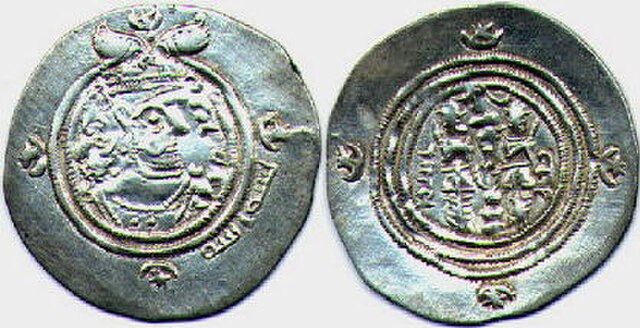Abū Jaʿfar Muḥammad ibn Jarīr ibn Yazīd al-Ṭabarī, commonly known as al-Ṭabarī, was a Sunni Muslim scholar, polymath, historian, exegete, jurist, and theologian from Amol, Tabaristan, now in present-day Iran. Among the most prominent figures of the Islamic Golden Age, al-Tabari is widely known for his historical works and expertise in Quranic exegesis, and has been described as "an impressively prolific polymath". He authored works on a diverse range of subjects, including world history, poetry, lexicography, grammar, ethics, mathematics, and medicine. Among his most famous and influential works are his Quranic commentary, Tafsir al-Tabari, and historical chronicle, Tarikh al-Tabari.
Tomb of al-Tabari in Baghdad, Iraq
Bal'ami's 14th century Persian version of Universal History by Tabari
Opening lines of the Quran from a Persian translation of Tabari's commentary
The history of Islam concerns the political, social, economic, military, and cultural developments of the Islamic civilization. Most historians believe that Islam originated with Muhammad's mission in Mecca and Medina at the start of the 7th century CE, although Muslims regard this time as a return to the original faith passed down by the Abrahamic prophets, such as Adam, Noah, Abraham, Moses, David, Solomon, and Jesus, with the submission (Islām) to the will of God.
Coin of the Rāshidūn Caliphate (632–675 CE). Pseudo-Byzantine type with depictions of the Byzantine emperor Constans II holding the cross-tipped staff and globus cruciger.
Close-up of one leave showing chapter division and verse-end markings written in Hijazi script from the Birmingham Quran manuscript, dated between c. 568 and 645, held by the University of Birmingham.
1314 manuscript illustration by Rashid ad-Din depicting the Negus of medieval Abyssinia declining a Meccan delegation's request to surrender the early Muslims.
The rāshidūn caliphs used symbols of the Sasanian Empire (crescent-star, fire temple, depictions of the last Sasanian emperor Khosrow II) by adding the Arabic expression bismillāh on their coins, instead of designing new ones.







